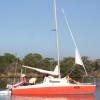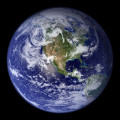A Very Brief Introduction to Geodesy
What is Geodesy?
Once people got around to farming, building cities and building empires, the human race has found it necessary to measure and map their domain. Many examples have found their way into our museums and archives, including:
Ø The mapping of land holdings in the Nile Valley (ancient Egypt)
Ø Recording the great journeys of global explorers such as Magellan and Columbus
Ø Recording topographic information for military purposes
The process continues today. Geopolitical boundaries are jealously guarded, almost as much as the suburban house block. The management of the world's natural and economic resources has become increasingly dependent on the availability of accurate and consistent geographic information. We need some way of providing a coordinate system that keeps everyone happy. We need a reference model that makes mapping, at the very least, achievable yet still enables us to pinpoint geographic, artificial and subjective features accurately and consistently.
But the Earth is a very complex shape. Its surface is disturbed by mountain ranges and deep oceans. The reference model needs to be simple so that it is easy to use. In addition:
Ø It needs to include a coordinate system which will allow the positions of features to be uniquely identified
Ø It needs to be readily associated with the physical world so that its use is easily understood
The science of measuring the Earth is known as Geodesy and is defined as:
“The determination of the gravitational field and other physical forces and the anomalies on and between these bodies.”
The ancient Greeks had long regarded the Earth as a sphere, although this may have been as much a philosophical belief as any physical observation.
In around 220 BC, a scholar, philosopher and businessman by the name of Eratosthenes devised a method to measure the size of the Earth.
He noticed that on the 21st of June, the Northern Summer Solstice, the sun illuminated the bottom of a well in Syene which lies on the Tropic of Cancer, latitude N 23.5°. He arranged for the angle of the sun to be measured at noon on the same day a year later at Alexandria, some 5000 stadia North of Syene and having the same longitude.
The angle was obtained by measuring the length of a shadow of an obelisk with a known height and, as the rays of light from the sun are considered parallel, this gave the angle at the centre of the Earth. Instead of angular measurement, Eratosthenes deduced that the angle was 1/50th of a circle and by using ratios he worked out that the radius of the Earth was 38 200 stadia.
This works out to around 6267 km compared with today's figure of 6371 km. Not bad considering the original distance from Alexandria to Syene was estimated in camel days of travel.
From these rudimentary beginnings the science of geodesy was born. Accurate knowledge of the size and shape of the Earth allowed generations of mapmakers, after thousands of years of refinement, develop a mapping system that is truly gobal.
Understanding Maps
Global Positioning System
- Why your GPS is sometimes wrong
This hub provides an explanation of why your GPS soetimes tells you you are somewhere where you know you are not.








